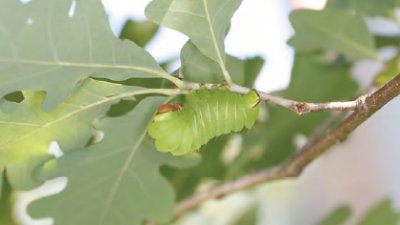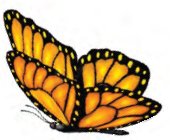AgEBB-MU CAFNR Extension
Green Horizons
Volume 24, Number 3
Fall 2020
Are You a Host with the Most?
Carol Davit, Missouri Prairie Foundation Executive Director
 |
Photo Credit: Linda Williams |
The foundation for insect and other animal life is plants. Not just any plants, but plants native to a given location, where insects in that same geography evolved with those same plants. Over thousands of years, insects developed the ability to digest natural toxins in plants that evolved to protect plants from being eaten. Many insects developed not only a tolerance for these plants, but also dependency. For example, milkweed plants contain cardenolide toxins that monarch butterfly caterpillars have developed a tolerance for, and they are in fact dependent on milkweed plants as their exclusive food source.
 |
There are many other insect/native plant relationships besides monarchs and milkweeds. In the book Nature's Best Hope, by the entomologist Dr. Doug Tallamy, he compares a native white oak tree in his yard with a non-native Bradford pear in his neighbor's yard. He found 410 caterpillars on the oak, and one caterpillar on the Bradford pear. Those caterpillars are crucial food for the babies of songbirds, and other animals.
We are included in nature's web of life, not just in our role as consumers of plants and animals, but also in the plants we choose to plant in our yards and property. If we choose to ll our landscapes with non-native plants like Bradford pear, non-native honeysuckle, and burning bush, that would be like inviting friends over for a smorgasbord of plastic food.
 |
By planting non-native plants, we are essentially laying out an inedible buet table for the songbirds we like to see around our homes, and they will suer for it.
Don't be a party pooper. The Missouri Prairie Foundation's Grow Native! program provides you with many resources so you can be a host with the most-enjoy!
